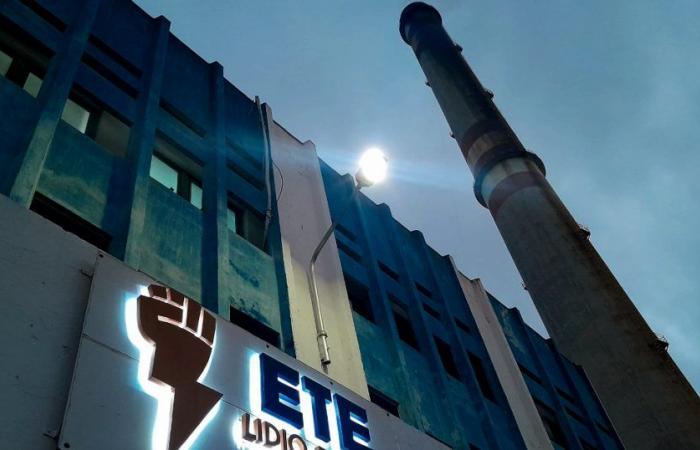The Electrical Union of Cuba (UNE) predicted an improvement in thermal electricity generation for the summer and estimated that it will increase by about 100 MW in relation to the same period last year.
This was stated this Tuesday to Granma the Director of Maintenance of the UNE, Julio González Céspedeswho calculated that the country’s thermoelectric plants should contribute an average of 1,200 MW to the national electrical system (SEN) for the months of July and August.
If achieved, the figure would exceed that achieved in the summer of 2023 by 100 MW, and that established in the same period in 2022 by 200 MW. However, González Céspedes acknowledged that this generation is very far from the installed power, of 1,993 MW. .
The manager explained to the official organ of the Communist Party of Cuba (PCC) the maintenance and repair plan planned to face a summer with fewer blackouts than last. But he also announced that, after this period, several thermal generation units will continue to receive maintenance, such as that planned for Unit 4 of the Carlos Manuel de Céspedes thermoelectric plant (CTE), in Cienfuegos.
Said Unit will receive extended partial maintenance (greater than 130 days), for the replacement of parts of the regenerative air heaters (CAR) and the boiler economizers.
Likewise, he explained that block one of the CTE Lidio Ramón Pérez, from Felton, received light maintenance for 25 days, with actions such as washing the boiler, changing pipes in a critical sector, and replacing damaged baskets in the CAR, after which it returned with a contribution of 230 MW. For the summer, this CTE is expected to contribute between 215 and 225 MW.
However, this Thursday the news of the detection of a break in the boiler tubes Unit 1 of the Felton that forced her to disconnect from the SEN. As the Minister of Energy and Mines had proudly explained, Vicente de la O Levythe 25-day light maintenance had served to clean the 22,000 tubes that cooled it.
The incident, which forced a minimum shutdown of three days, joins other similar ones in other thermoelectric plants in the country, which suffer breakdowns shortly after completing repair or maintenance cycles, like Unit 6 of Nuevitas.
Despite the fact that UNE managers insist that it is “something normal”there are many expert voices who fear that the interventions of Cuban technicians and operators are not entirely satisfactory, or that the information simply does not correspond to reality, and the constant “repairs and maintenance” are a pretext to hide the dimensions of the energy crisis in the country.
González Céspedes pointed out that, although Guiteras has accumulated 13 years without capital maintenance, in the summer it will reach an average power between 250 and 260 MW. This will be possible thanks to a four-day stop before July, in which the CAR baskets, often dirty due to the type of fuel used (Cuban crude oil with high sulfur content), will be washed.
From promises to promises, Cubans see time passing between “lights”
At the end of August 2023, the Cuban government boasted an improvement in generation capacity during the summer. In addition, he assured that the UNE was designing “a set of actions” to guarantee balance with demand in the summer months of 2024, as revealed in a note in the official newspaper. Workers.
Last May, the UNE reported that blackouts would increase during the month of June for maintenance work at several Thermoelectric Power Plants (CTE).
“As has been reported in these months from January to June, maintenance activities at Thermal, Energy and Distributed Generation Plants are increased with the purpose of reaching the months of greatest consumption and electricity demand, which are July and August, months in addition, the rest of the population,” explained a note posted by the entity on Facebook.
Likewise, the state company stated that it would comply with “the maintenance plan until the last days of June” in order to minimize the effects in the summer. However, he clarified that in July and August there will also be blackouts “if there are some unforeseen outages of Generation Units.”
At the end of that month, the ruler Miguel Diaz-Canel announced what the people of Cuba feared since the blackouts worsened: They could not offer guarantees that the summer months would pass without impacts on the electrical service..
“We are going to have extended maintenance until the month of June to minimize the inconvenience of blackouts in the summer, especially in the months of July and August,” he said.
For its part, in mid-April, the Ministry of the Interior (MININT) announced that expected protests in Cuba this summer and blamed the United States government, and politicians from that country, for inciting public disorder on the island in the midst of the current energy crisis.
“The United States is launching new attempts to ‘warm up’ the streets during the summer, taking advantage of the complex situation that the country is experiencing, according to the most recent interests of its intelligence agencies to generate attacks against Cuba, in what they call Operation 11.7. 24”, said the Minint on the social network X.
The repressive body of the Cuban regime considered that the alleged attacks would have “as a priority objective the national electro-energy system, due to its impact on the quality of life of the people.”






